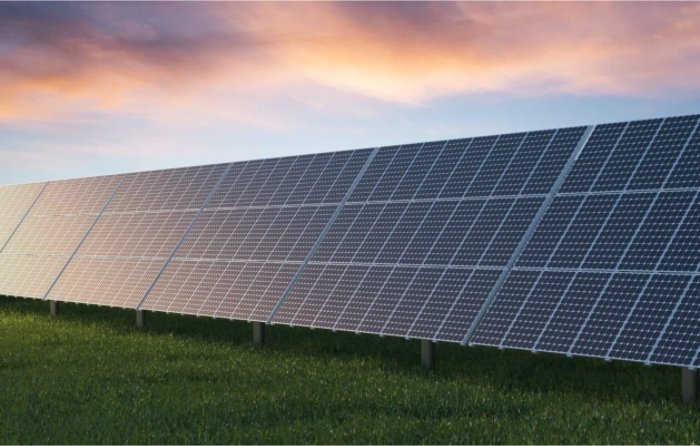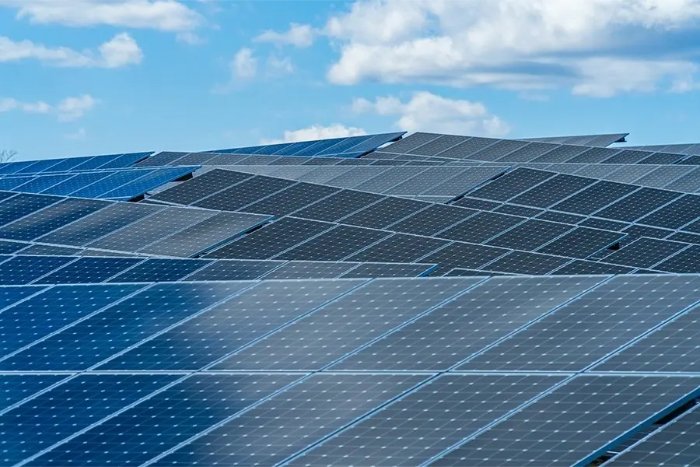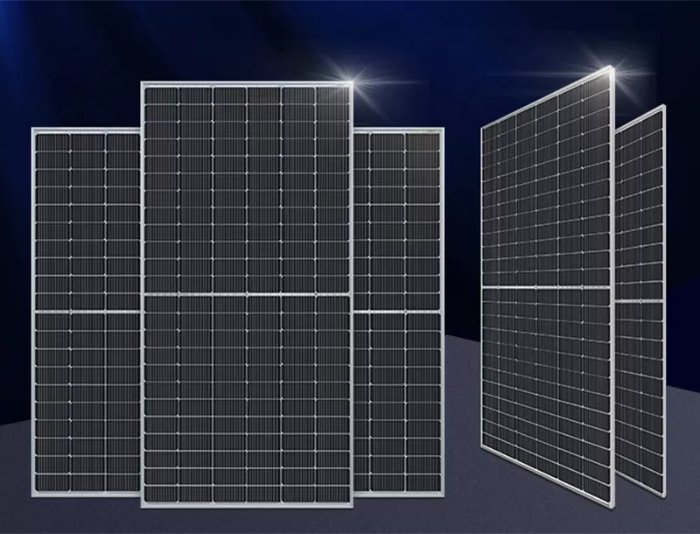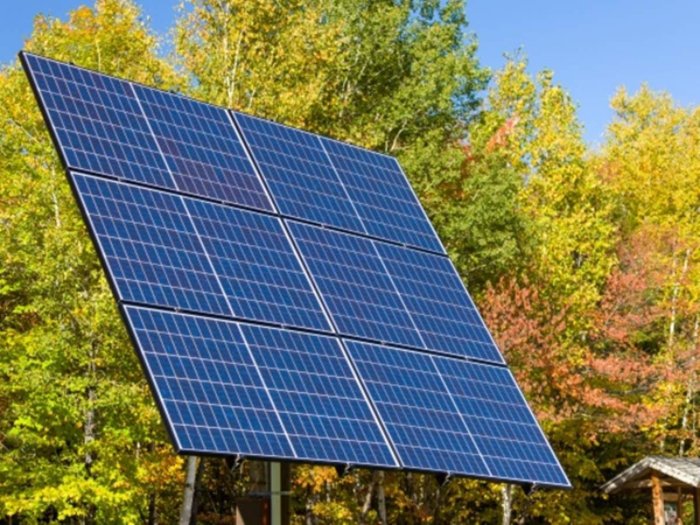Energy Efficiency in Various Climates
The performance in extreme heat
Polycrystalline solar panels are incredibly robust at hot climates, mostly because solar efficiency often drops with the temperature rise. In places like Arizona or Southern Spain, it can exceed 40℃, yet polycrystalline panels are less affected than some other technologies. They have a temperature coefficient of about -0.4% per degree: in other words, the output falls by only 0.4% per every degree above 25℃. The silicon structure of the technology is highly robust and can work even under the higher heat.
The durability at cold and cloudy conditions
At less sunny and colder places, such as Northern Europe, polycrystalline solar panels remain highly effective. The ability of these panels to capture a diffuse sunlight is especially helpful during the overcast days. For example, in Germany, the number of sunlight hours is about 1600 per year, yet they still enable generating many watts with about 90 to 110 watts per square meter.
Cost-effectiveness in different regions
Undoubtedly, as already noted, the affordability of these panels is one of the main advantages. As a result of the less resource-demanding manufacturing process of polycrystalline silicon, in comparison to the monocrystalline alternative, all regions with the high exposure to the sun can enjoy the cost advantage. However, this does not mean that advances in the production process came with a significant decline in performance, meaning that the installation still pays for itself. In the case of India, polycrystalline technology became much more popular due to the low upfront costs because of the country’s substantial sunlight nature.
Applicability to Installations
Polycrystalline panels can be integrated into various mounting systems, including ground mounts, rooftop, and tracking systems. Such compatibility was proven in California, where a 50 MW solar farm used polycrystalline panels in the context of a tracking system. The use of this system enabled 25% more capture then the nominal yield of the technology, showing a high efficiency of the approach.

Durability and Longevity
Polycrystalline silicon solar panels are not only among the most widespread on the market; they are also rated among the most durable. Designed to serve through the decades, these products are built to last and able to withstand external challenges. All solar panels, including polycrystalline silicon products, come with industry-standard 25 to 30-year warranties, and many continue to provide opportunities to save energy and contribute to the cause of sustainability even then. A 2016 study devoted to the degradation of panels installed in the early 2000s found that polycrystalline feeder units retained more than 80% of their initial efficiency 25 years into the use . Some ideal conditions, like the Utah desert shown on the picture above, allow these panels to operate for decades with little to no loss of capacity in terms of efficiency.
Resistant to Heavy Snow and Strong Winds
Polycrystalline products are manufactured to resist outside environment challenges, with their silicon cells based on high-opacity tempered glass and framed in highly resistant aluminum. Due to the specifics of snow layering, cleaning after a major snowfall does not necessarily present an issue in photovoltaics. Units working in the Rocky Mountains in the USA have to resist snow loading of up to 5400 pascal units, and these panels do . Naturally, heavy snowfalls are far from the only challenge, and other accumulating matters like dirt and dust also present considerable difficulties, with parts designed to withstand one sure to withstand the other.
Low Degradation Rate
All panels, whether they be monocrystalline, amorphous silicon, or polycrystalline, degrade with time when exposed to the damaging effect of UV light and weather cycles. The rate for these panels is relatively low, ranging from 0.5% to 0.8% per year, and the aforementioned panels in the Utah desert, having been exposed to full sun and scorching heat for over ten years now, have lost less than 8% of the original capacity . Individual silicon cells are also relatively easy to replace, making repairs in case of damage relatively easy.
Installation and Maintenance
Streamlined Installation Process
Polycrystalline solar panels are highly favorable among installers due to their installation process. The primary reason is the panels’ standardized design and, as a result, their compatibility with any mounting system. Installers prefer these panels since they fit smoothly into any framework built for residential or commercial use. For instance, a typical installation project in suburban California takes only two days, from bolting the brackets to the initial wiring. Such proficiency results in a lower labor cost, and homeowners notice less disruption in their routine life. Lower Maintenance Needs
One of the critical advantages of polycrystalline solar panels is their low-maintenance requirement. Panels consist of fewer elements that can be damaged and need repair. Regular maintenance only involves simple cleaning to keep the panels free of dust, leaves, or snow. As a result, the system makes maximum use of the light received due to minimum impedance. A 2018 study was conducted in Texas and examined three solar systems, namely those with cleaning every day, every two months, and every one month. The analysis found that solar systems with daily washes showed only a 5% improvement in performance or less than a 1% daily improvement over one that was cleaned every month. Robustness Against System Failures
The panels are also known for their increased robustness levels, which leads to a lower percentage of system failure. The use of more robust panels in any of the levels of technological application result in uninterrupted energy production. For instance, a 100MW solar farm in Ontario has a system downtime of 0.1% annually, most of which is known to be attributable to scheduled maintenance, not unexpected repairs. Cost-Effectiveness of Maintenance
The lower than usual need for repairs and increased robustness provides a cost-effectiveness factor to the use of polycrystalline solar panels. Such extended useful life expectancy results in the panel costing less across the solar panel system’s time of existence.

Versatility and Aesthetic Appeal
Polycrystalline solar panels are a great asset to the modern market due to many reasons. First, their flexibility in terms of application is worth mentioning as they can be used for both small-scale solar rooftops and large solar farms . Importantly, they are effective in different lighting conditions and both high and low latitudes. It can be illustrated by the example of the Scandinavian countries, where even though sun hours are limited during wintertime, these panels still yield lots of energy because of the low-light compatibility . Second, polycrystalline and monocrystalline panels differentiate not only in their effectiveness but also in their design. While the latter is usually of a plain black or almost black color, the former come in shades of blue of different intensity, which is more pleasant for both homeowners and architects who value visual appropriateness for different kinds of buildings.
The Building Chameleon-Polycrystalline Panels
Indeed, a good example of the solar farm’s great design is an actual farm built in Barcelona a few years ago. The panels’ blue tint was made identical to the terracotta rooftops of the region thus allowing to both harness the energy effectively and not change the local look . Nowadays, aesthetically pleasing solar panels that look like roof tiles are commercially available and are of the polycrystalline type . In New Jersey, a group of houses built with such shingle-looking panels proved this type of solar panel being rightly called one of the latest architectural fashion trends . People prefer to buy houses with solar rooftops because it increases their energy efficiency and consequently house value. Moreover, the spatial adaptability of the polycrystalline solar panels also has great relevance because the park discussed in the earlier sections had some proximity to Seoul yet, because it had 20 vertical rows of the panels, it did not occupy a lot of space and at the same time harnessed lots of energy.



